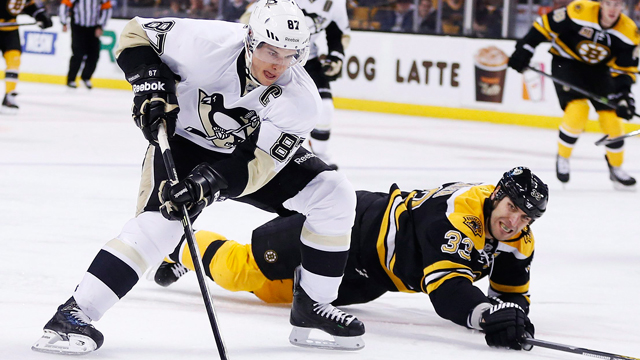I grew up watching Wayne Gretzky, and it didn’t take long to spot his most important, signature move. It wasn’t a deke on a goalie, or something he performed “in his office” behind the goal. Gretzky’s bread-and-butter play was that tight curl inside the blueline. He’d come up the right side of the ice about 10 feet from the boards, gain the line, take one more stride, then make that curl towards the wall.
When he emerged from his little circle, two things had happened: The gap between Gretzky and the defenceman—who by now had hit the brakes and was standing still—had increased; and a teammate (often Paul Coffey) who had been defending in Gretzky’s absence was given time to catch up to the play and become that deadly trailer, the only guy in the zone coming with speed. Try that move today and Gretzky would be simultaneously introduced to what coaches call “back pressure,” and what medics call “a stretcher.” In 1975, there wasn’t a 6-foot-1, 200-lb. winger with above average speed trailing Gretzky down the ice, stride for stride. Now there is, so a line rush goes all the way to the goal—no circling and “buying time.”
Watch the so-called “Greatest Game Ever Played” on New Year’s Eve, 1975, between the Soviet Red Army and the Montreal Canadiens. The game is played at a glacial pace compared to what we watch today. As such, the art of hitting used to consist of graceful hip checks or skillfully timed, open-ice hitting that took years to perfect. I watched hockey on Tuesday night from 5 pm ’til after 11. In the course of one night of gorging on the game, I watched Tom Wilson come from another time zone to crush Brayden Schenn, saw Zenon Konopka carelessly injure Vancouver’s Ryan Stanton on a play at the end boards and witnessed Kyle Quincey running Ryan Getzlaf’s face through the dasher. (Thankfully the night ended on an Oilers game, and they don’t hit anybody.)
The speed of the game has changed everything, to the point where it is becoming time to ask the question: Has the game become TOO fast? If Gretzky-like magnificence is rendered moot by the speed and size of checkers, is the game better off? Or worse?
Sidney Crosby could, for argument’s sake, be even better than Gretzky. But the fact he is forced to perform every skillful act at top speed makes his failure rate far higher. Bouncing pucks at 2013 speed, compared to 1980s speed, are two entirely different things. And we wonder: Have individual skills risen at an equal rate to the speed of the overall game?
We have plenty of time for that debate when it comes in accordance with scoring points and making plays. Where the speed of the game and mounting injuries are concerned however, the NHL is quickly approaching critical mass. “[It] is something that needs to be taken into consideration when we make rule changes, or equipment changes,” Steve Moore, whose 2003 injury at the hands of Todd Bertuzzi had nothing to do with the in-game dynamics, said on Wednesday. “At times, the speed of the game does require that players are not going to be able to perhaps think about the long-term effects of a body check that they’re making in a split second.”
Today, no Flyers teammate can legally slow up Washington’s Wilson when he takes a run at Schenn—literally from the neutral zone to the goal line. Wilson is a new age missile of size and speed that did not even exist in Darryl Sittler’s day.
We’re still waiting for the Tom Wilson’s of the world to realize the injurious consequences and slow down a bit. And at the recent Board of Governors meeting, Player Safety head Brendan Shanahan aired a video showing several instances of just that. More often, however, we see the Kyle Quincey approach, palms raised as he skates to the penalty box, miming a statement that tells the viewer, “C’mon. I barely touched him. He’s probably faking it.” Meanwhile, Getzlaf’s teeth are jutting out through his lip, his brain having rattled off the inside of his skull a couple of times.
It happens fast, we’re told, and we realize that it does.
But concussion effects happen slowly. And they last much, much longer.


